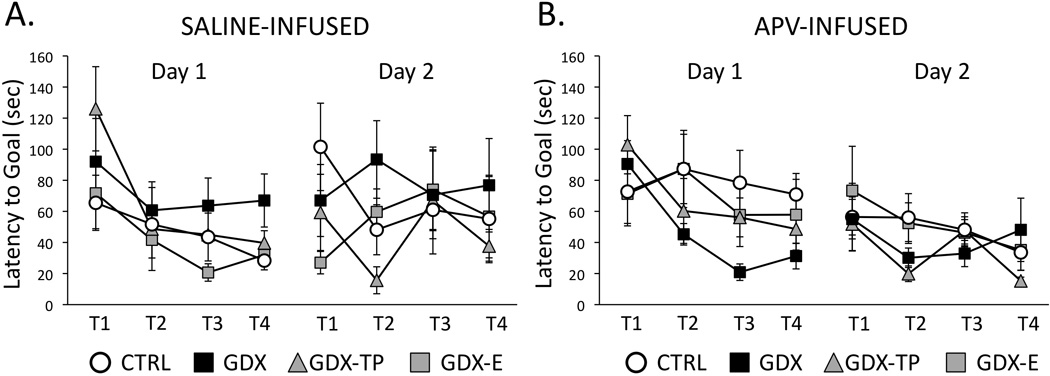Figure 5.

Line graphs showing average latencies in seconds to locate the goal across the four trials (T1-T4) of Day 1 (acquisition) and the four trials of Day 2 (retention) testing for gonadally intact control (CTRL, open circles), gonadectomized (GDX, black squares), and gonadectomized male rats supplemented with testosterone propionate (GDX-TP, gray triangles) or estradiol (GDX-E, gray squares) that were infused with saline (A, C) or with APV (B, D) prior to Day 1 testing. Error bars represent standard errors of the mean. During Day 1 testing, the saline-infused CTRL (n=6), GDX-E (n=3) and GDX-TP (n=3) groups took less and less time to locate the goal across trials, whereas GDX rats (black squares, n=5) continued to take longer times to reach the goal. However, among APV-infused rats, the GDX group (n=8) showed greater reduction in the amount of time taken to locate the goal compared to the times taken by all other groups [CTRL (n=9), GDX-E (n=8) and GDX-TP (n=10)]. Analyses of variance performed on latency data identifying significant main effects of Group and of Trial and revealing significant differences in GDX compared to other hormone-treatment groups for both the saline and APV treated cohorts are described in the text. During Day 2 testing, latencies to locating the goal for all groups were similar, relatively short and consistent across trials for both the saline (A) and APV (B) infused cohorts. There were no significant main effects of Group or Trial among these data.
